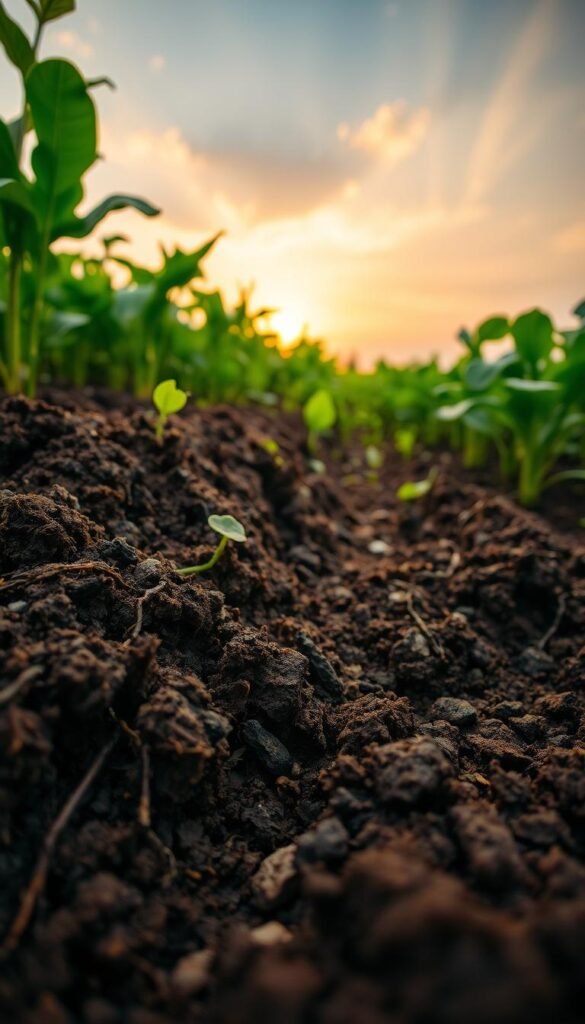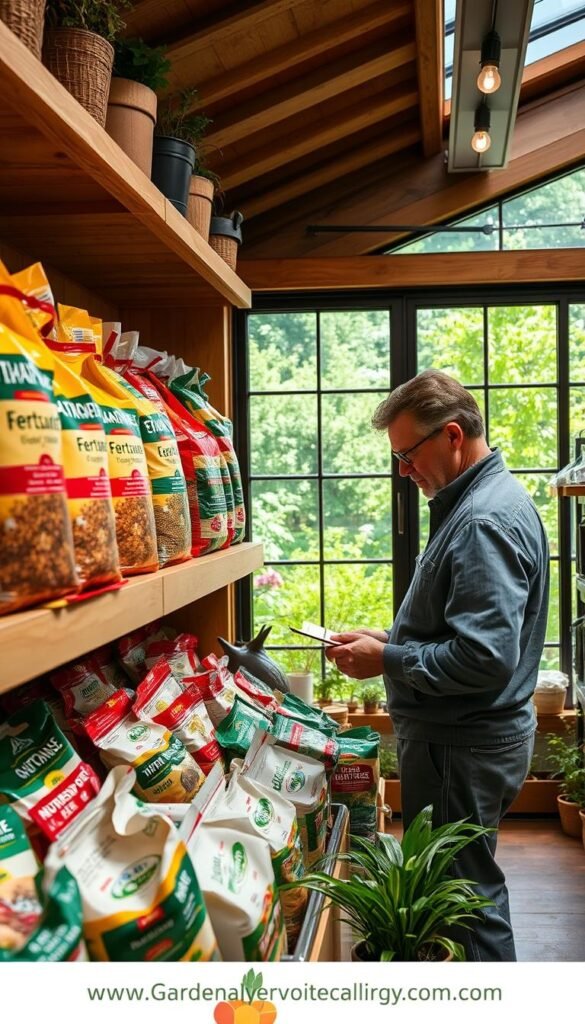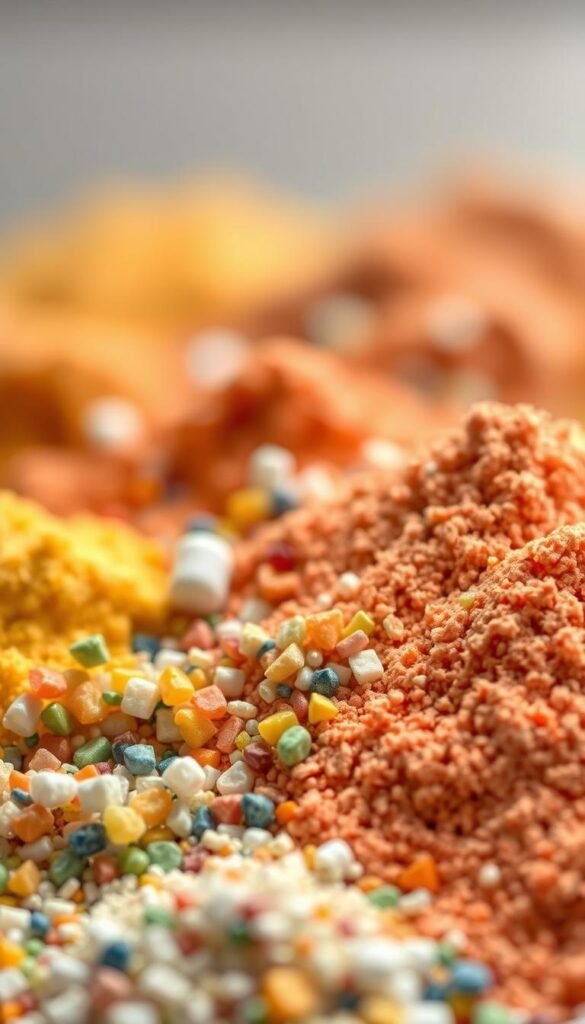Growing a lush, productive garden starts with knowing what your green friends need to survive. While plants naturally absorb carbon, hydrogen, and oxygen from air and water, they rely on soil for 14 other critical nutrients. Without these, growth slows, leaves yellow, and harvests shrink.
That’s where smart feeding comes in. Adding compost or fertilizer helps replenish missing elements like nitrogen or phosphorus. But more isn’t always better—overdoing it can burn roots, pollute waterways, and leave you with weaker plants.
Think of nutrients as a balanced diet for your garden. Just like you wouldn’t eat cake for every meal, your tomatoes don’t need endless synthetic formulas. Timing matters too: young seedlings crave different ratios than flowering veggies.
Mastering these basics ensures your efforts translate to baskets of fresh produce. You’ll save money, protect local ecosystems, and enjoy healthier crops season after season. Ready to dig deeper? Let’s explore how to nourish your space effectively.
Understanding Essential Plant Nutrients
Just like you need a balanced diet, your green companions require specific nutrients to thrive. These elements work together like a team – some take center stage, while others play supporting roles that keep everything running smoothly.
The Power Trio: Nitrogen, Phosphorus, Potassium
Nitrogen fuels leafy growth and vibrant green color. Phosphorus strengthens roots and boosts flower production, while potassium enhances disease resistance. You’ll spot these as N-P-K numbers on fertilizer bags – a code that reveals their proportions.
Most fertilizers focus on these three, but plants need more than just the basics. A guide to understanding fertilizers can help you decode these ratios for different growth stages.
Behind-the-Scenes Helpers
Calcium builds strong cell walls, magnesium aids photosynthesis, and sulfur helps create proteins. Then come micronutrients – iron for chlorophyll, zinc for enzyme production, and copper for nutrient absorption. Though needed in trace amounts, their absence causes big problems.
Think of it like baking: forget the baking soda (a small ingredient), and your cake collapses. This NPK breakdown shows how to balance all elements for optimal results. By matching nutrient supply to plant needs, you create healthier crops that naturally resist pests and weather stress.
The Role of Soil Organic Matter in Fertilization

Healthy soil thrives on organic matter—nature’s pantry for your garden. This hidden hero boosts fertility while tackling two critical challenges: keeping nutrients available and managing moisture effectively. Let’s explore why this underground ally deserves your attention.
How Organic Matter Improves Nutrient Retention
Think of organic material as a savings account for plant food. Clay particles and decomposed matter work together to lock in minerals like nitrogen and potassium. Sandy soils with 5-10% organic content hold 3-5 times more nutrients than lean, untreated earth.
Your kitchen scraps, fallen leaves, and composted manure all count. These materials break down slowly, feeding roots over weeks or months. This steady release prevents waste and protects nearby waterways from runoff pollution.
Benefits for Soil Structure and Water Management
Organic matter transforms dirt into a sponge-like habitat. In sandy areas, it helps retain moisture between rains. For heavy clay beds, it creates air pockets that prevent waterlogging. Either way, roots grow deeper and stronger.
| Soil Type | Water Retention | Drainage | Nutrient Holding |
|---|---|---|---|
| Sandy | Improves by 40% | Already Good | Low → Moderate |
| Clay | Moderate | Improves by 35% | High |
Regular additions of compost or grass clippings create crumbly, well-aerated earth. Over time, this reduces your need for store-bought plant food. Your garden becomes more self-sufficient—and your plants more resilient.
Assessing Your Soil’s Nutrient Levels

Your garden’s success starts beneath the surface. While plants show visible signs of distress, the real story unfolds in your dirt’s chemical makeup. Testing gives you a roadmap to fix imbalances before they impact your harvest.
Conducting a Soil Test for Accurate Analysis
Labs like the University of Minnesota’s Soil Testing Laboratory turn dirt samples into action plans. Their basic soil test measures texture, organic matter, and key minerals. You’ll get precise numbers for phosphorus, potassium, and pH levels – plus lime needs for adjustment.
Most veggies thrive in slightly acidic conditions (6.2-6.8 pH). But blueberries demand 4.5-5.5 pH. Without testing, you might accidentally create hostile ground for acid-loving plants. The report explains your results and suggests specific amendments.
Why guess when science can guide you? Custom recommendations help you skip unnecessary products. One gardener saved $87/year by discovering their soil already had excess phosphorus. Regular testing (every 2-3 years) keeps your garden thriving without nutrient overload.
Choosing the Right Fertilizer for Your Garden

Navigating fertilizer options feels like decoding a secret garden language. While plants absorb nutrients as ions regardless of their source, your selection impacts soil health, budget, and harvest quality. Let’s simplify the choice between nature-derived and lab-made solutions.
Organic vs Inorganic: Breaking Down the Differences
Organic fertilizers come from living sources like bone meal or compost. They feed soil microbes while releasing nutrients slowly. You’ll pay more per nutrient pound, but these products improve soil structure over time. Perfect for long-term garden health and organic certification.
Inorganic fertilizers offer precise formulas with instant results. Water-soluble crystals or pellets deliver nitrogen fast to yellowing leaves. Cost-effective and convenient, they’re ideal for quick fixes or container plants needing immediate care.
| Type | Speed | Cost per Nutrient | Soil Impact | Best Use |
|---|---|---|---|---|
| Organic | Slow (2-6 months) | Higher | Builds structure | Edible gardens |
| Inorganic | Fast (1-14 days) | Lower | Neutral | Quick recovery |
Combine both approaches for balanced nutrition. Use organic fertilizers as a base in spring, then supplement with inorganic blends during peak growth. This strategy keeps your plants thriving while maintaining ecological harmony.
Deciphering Fertilizer Labels and Analysis

Cracking the code on fertilizer packages turns guesswork into growth. Those three bold numbers on every bag? They’re your cheat sheet for feeding success. Let’s break down what 17-18-28 or 10-20-10 really means for your tomatoes and other greens.
The first number shows nitrogen percentage (N), which fuels leafy growth. Phosphorus (P) comes next, vital for roots and blooms, followed by potassium (K) for overall plant health. A 5-pound bag of 10-5-5 mix delivers 0.5 pounds of nitrogen – simple math makes you a savvy shopper.
Ratios matter more than flashy names. A 10-20-10 blend offers a 1:2:1 nutrient balance, perfect for young transplants needing extra phosphorus. But that “tomato food” label? Check the actual numbers – some products skimp on potassium while charging premium prices.
Here’s a pro tip: phosphorus and potassium listings show oxide forms, not pure elements. That 28% potassium in your tomato fertilizer? It’s actually 23% usable K when converted. Smart gardeners factor this into their feeding plans.
Match ratios to your plants’ life stages. Seedlings thrive on balanced blends like 5-5-5, while fruiting tomatoes crave higher phosphorus (middle number). Comparing labels helps you spot deals – two brands might have identical nutrients but wildly different costs per pound.
Timing Your Fertilizer Applications Effectively

When should you feed your garden? Think of nutrients as invitations to a party – send them too early, and they’ll leave before the fun starts. Show up late, and your plants miss the celebration. Smart timing turns fertilizer into fuel exactly when roots need it most.
Pre-Planting Enrichment and Post-Planting Revitalization
Spring soil prep sets the stage. Mix phosphorus and potassium into beds 2-3 weeks before sowing. These nutrients stick around, waiting for young roots to find them. Fall applications work too – winter rains help dissolve granules slowly.
| Nutrient | Best Application Time | Mobility | Key Role |
|---|---|---|---|
| Nitrogen | At planting/green-up | Moves with water | Leaf growth |
| Phosphorus | Pre-planting | Stays put | Root development |
| Potassium | Pre-planting | Stays put | Disease resistance |
Save nitrogen boosts for active growth spurts. Apply it when seedlings have 4-6 true leaves or perennials show new shoots. Late-season nitrogen? It’s like serving espresso at bedtime – plants focus on leaves instead of fruits.
Track your garden’s calendar: early spring for P/K, mid-season for N. Container plants need extra care – their limited soil drains nutrients faster. A biweekly liquid feed keeps them thriving through summer’s heat.
Feeding Vegetables and Fruits for Optimal Harvest
Getting the most from your garden means matching meals to each crop’s appetite. Heavy feeders like tomatoes and corn demand extra nutrition, while light eaters thrive with minimal input. Start by grouping plants based on their hunger levels for efficient care.
Smart Strategies for Hungry Crops
Tomato vines and cornstalks soak up nutrients like sponges. Feed these vegetables every 3-4 weeks using compost tea or balanced fertilizer. A 3-inch compost layer around stems triples yields by improving soil texture and nutrient access.
Rotate heavy feeders yearly to prevent soil depletion. Pair them with nitrogen-fixing companions like beans. For container-grown peppers or eggplant, use slow-release granules mixed into potting soil.
Moderate feeders like carrots need half the food of tomatoes. Light eaters such as bush beans flourish in soil amended years prior. Match portions to plant needs—overfeeding attracts pests more than it boosts growth.
Choosing beginner-friendly vegetable varieties simplifies feeding routines. Disease-resistant tomato types slash crop losses while needing fewer interventions. With smart planning, your garden becomes a buffet where every plant gets just enough—and nothing goes to waste.






